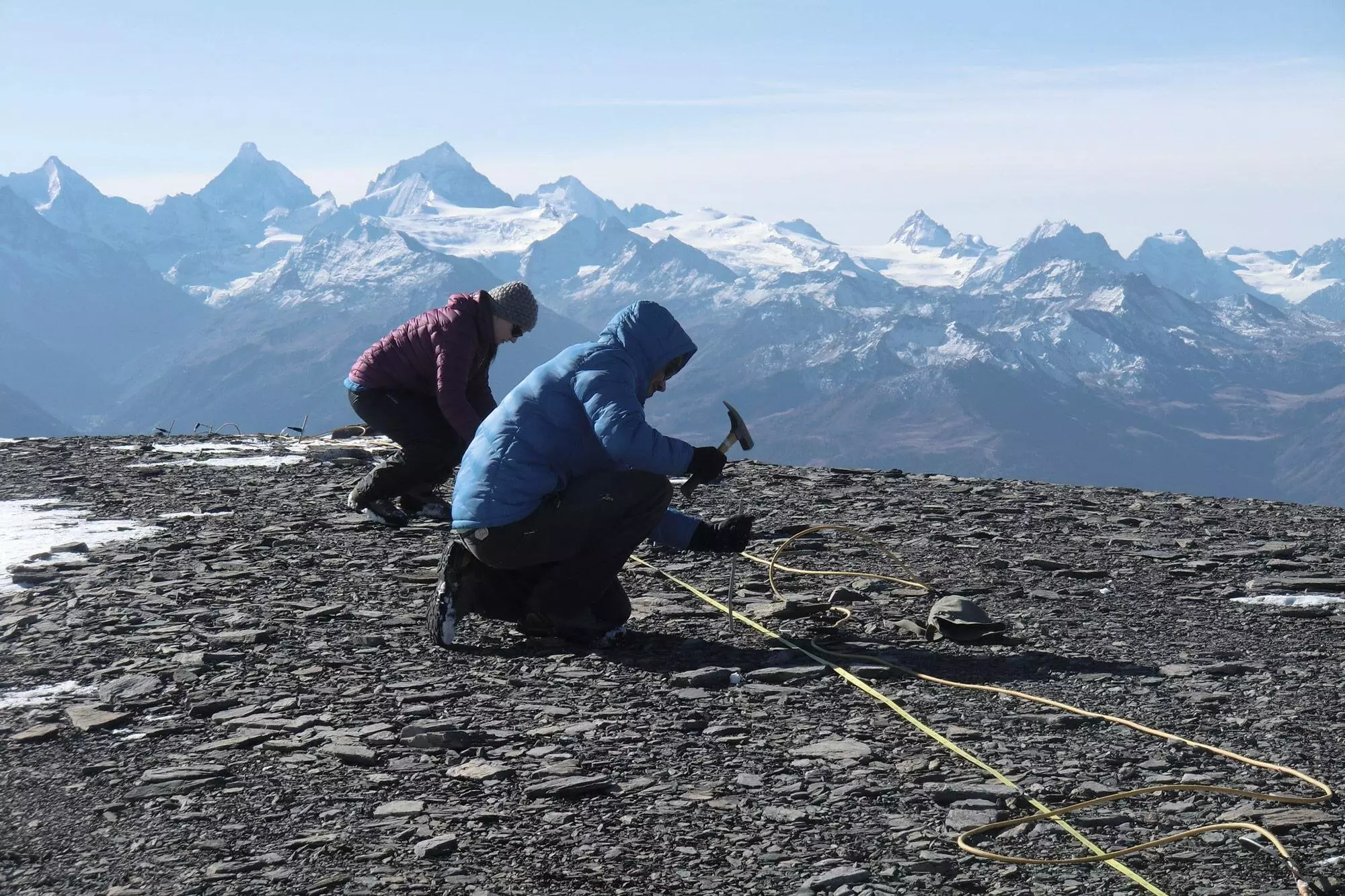The melting of permafrost in the Alps is a significant concern that poses numerous risks to the landscape and infrastructure of the region. As glaciers vanish, the underlying bedrock, which is usually permanently frozen, begins to thaw. This thawing process can lead to destabilization of mountain slopes, changes in the landscape, and potential dangers to people and their surroundings. The Swiss researchers have been monitoring the state of permafrost in the mountains for many years to understand the implications of this phenomenon.
Traditionally, measuring permafrost involved drilling deep holes to measure ground temperatures, a process that is time-consuming and expensive. However, recent advancements have led to the development of a non-invasive measurement method that utilizes electrical resistivity to assess permafrost over large areas. By passing electrical current through the ground and measuring the potential difference at various electrodes, researchers can determine the presence of water in liquid or frozen form, as well as the volume of ice in the ground. This innovative approach provides a more comprehensive understanding of permafrost conditions and allows for forecasting future developments in the region.
Analyzing the data collected through electrical resistivity measurements presents its own set of challenges. Factors such as the characteristics of rock layers, slope inclination, and other geological features must be considered when calculating the distribution and quantity of permafrost. Additionally, refining the model for these calculations is an ongoing process that requires continuous research and development. Comparing the results of resistivity measurements with data from other sources, such as the Swiss Permafrost Monitoring Network, helps to validate the findings and enhance the overall understanding of permafrost dynamics in the region.
The Alarming Loss of Permafrost
Recent studies have shown a concerning trend of permafrost loss in the Alps, with temperatures in boreholes rising by approximately 1°C over the past two decades. The data from resistivity measurements has revealed that about 15% of the ice in the permafrost was lost between 2015 and 2022. Furthermore, research indicates that even a single hot summer can trigger irreversible loss of permafrost, with subsequent cold winters unable to compensate for the damage. This shift in permafrost conditions could lead to increased rockfalls and landslides in areas where they were previously uncommon, highlighting the urgent need for predictive methods to identify tipping points in the landscape.
Implications for the Future
As permafrost continues to thaw in the Alps, researchers like Christian Hauck are working to predict future developments and potential risks associated with this phenomenon. It is believed that many alpine regions have either reached or are nearing a tipping point where permafrost loss accelerates uncontrollably, emphasizing the need for immediate action to mitigate the impacts. Establishing robust methods for early detection and reliable prediction of these tipping points is crucial to safeguarding the environment and infrastructure in the face of ongoing climate change challenges. The future of the alpine landscape depends on our ability to understand and respond effectively to the accelerating loss of permafrost in the region.


Leave a Reply